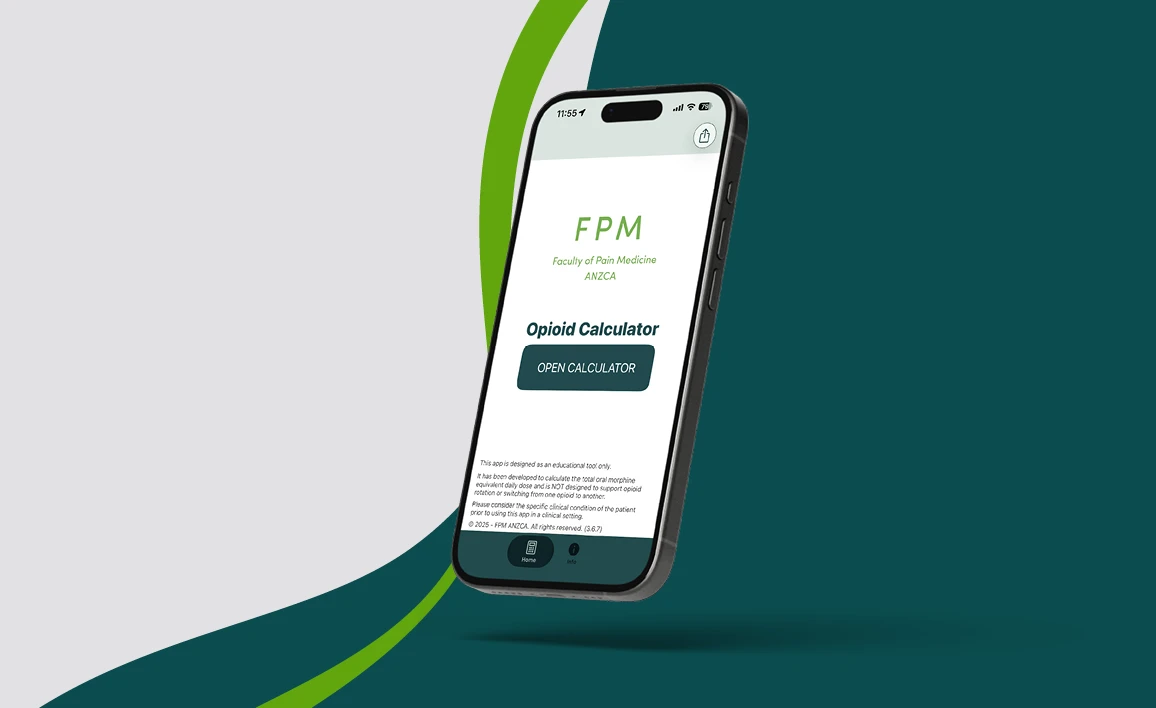For fast access to the prof doc you're looking for, please use the search tool below. Type your search term and press Enter, then select Documents to narrow down the results.
All professional documents
Key to understanding prof docs
These documents contain information relevant to the clinical, administrative and professional practice of perioperative care including anaesthesia, and pain medicine.
Policies (denoted CP) are documents that formally state a principle, plan and/or course of action that is prescriptive and mandatory.
Position statements (denoted PS) are documents that describe where the college stands on a particular issue. This may include areas that lack clarity or where opinions vary. A position statement is not definitive, prescriptive or binding.
Guidelines (denoted PG) are documents that offer advice on a particular subject, that:
- Are ideally based on best practice recommendations and information.
- May be based on available evidence and/or expert consensus.
- Are not prescriptive.
The framework for writing or revising professional documents is described in CP23 Policy for professional document framework and accompanying Background Paper. The professional document process is governed by CP24 Policy for development and review of professional documents and accompanying Background Paper. The external guideline endorsement process is governed by CP25 Policy on endorsement of externally developed guidelines and accompanying Background Paper. The FPM professional document process is governed by PP01(PM): Policy for the development and review of professional documents.
Professional documents in PILOT are operational and may be altered before the final version is promulgated. Printed copies are noted to be accurate at the time of printing only. Feedback on professional documents during the PILOT phase is welcome and encouraged. If you have any queries or require a zip file of all professional documents, please email us.
Prof docs at a glance
Explore our other standards of practice
We've contributed to or endorsed a selection of guidelines and statements developed by other organisations.
These statements undergo a deliberative process within the college committee structure and require approval by the oversight committee, or the ANZCA Council, prior to publication.
The Standards for Anaesthesia and its accompanying background paper are intended to apply to all those in clinical practice within the specialty of anaesthesia wherever anaesthesia services are provided. The aim is for these standards to be used as benchmarks to foster quality in patient care as well as to facilitate quality improvement.
We're responsible for setting the standards of clinical practice for pain medicine in Australia and New Zealand. Our activities in this area include developing professional documents, issuing safety alerts; and overseeing incident reporting activities.
The Standards for Perioperative Medicine have been released for a six-month pilot period ending in June 2024. These standards are intended to apply to all medical practitioners whose practice falls within the scope of perioperative medicine. The purpose of these standards is to articulate standards and associated indicators of quality care against which performance can be compared.
We oversee a range of incident reporting activities in Australia and New Zealand, including mortality reporting and webAIRS, to ensure that we continue to be two of the safest countries in the world to undergo anaesthesia.
These management and diagnosis cards have been jointly produced by ANZCA and the Australian and New Zealand Anaesthetic Allergy Group (ANZAAG). They are designed to be used as a crisis management package in the event of an acute perioperative anaphylaxis.
The Perioperative Care Framework was developed by the Perioperative Care Working Group approved by ANZCA Council in December 2021, and updated in December 2023.
ANZCA and peak diabetes, obesity and gastroenterological bodies have produced an updated set of clinical practice recommendations for patients using GLP-1 receptor agonists and dual GLP-1/GIP receptor co-agonists. The college has also developed a patient information sheet and a form for patients taking GLP-1 receptor agonists for the treatment of diabetes or for weight loss.
Important information about the introduction of neural devices with connectors compliant with the new international standard ISO 80369-6.
To assist fellows and trainees, the college has also developed a framework for understanding professionalism and performance as it applies to the practice of anaesthesia and pain medicine: Supporting professionalism and performance – A guide for anaesthetists and pain medicine physicians.



